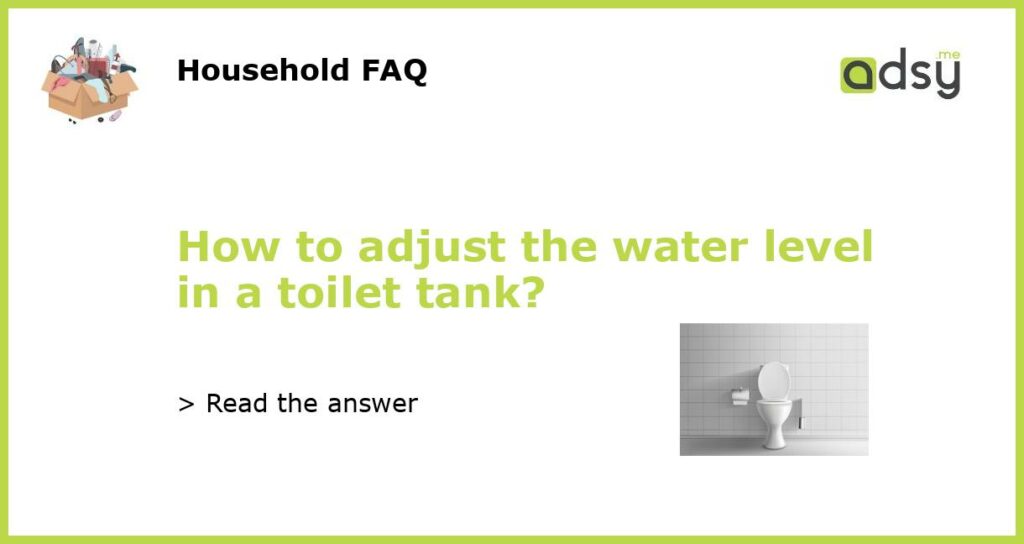Understanding the Water Level in a Toilet Tank
Before we dive into adjusting the water level in a toilet tank, let’s first understand how it works. The water level in the tank determines the amount of water that is available for each flush. If the water level is too low, you may not have enough water to properly flush waste down the drain. On the other hand, if the water level is too high, it can result in constant running or overflows. Therefore, it is important to ensure that the water level is set correctly for optimal performance.
Adjusting the Water Level with the Float Valve
The most common way to adjust the water level in a toilet tank is by using the float valve. The float valve is a mechanism that regulates the flow of water into the tank. When the water level drops, the float valve opens to let water in, and when the water level rises, it closes to stop the flow. To adjust the water level, you will need to adjust the position of the float valve.
Adjusting the Water Level with the Fill Valve
In some toilets, the fill valve is used to adjust the water level. The fill valve is typically a cylindrical device located on the left side of the tank. To adjust the water level using the fill valve, you will need to turn the adjustment screw or knob. Turning it clockwise will lower the water level, while turning it counterclockwise will raise the water level. Keep in mind that not all toilets have fill valves that are easily adjustable, so you may need to consult the manufacturer’s instructions or seek professional help if you can’t locate the adjustment mechanism.
Testing and Fine-Tuning the Water Level
After adjusting the water level using either the float valve or the fill valve, it is important to test and fine-tune the water level. To do this, flush the toilet and observe the water level in the tank. The water level should stop rising just below the overflow tube or water level mark. If the water level is too low, you may need to adjust it further. If the water level is too high and constant running occurs, you will need to lower it slightly.
Additional Tips and Considerations
When adjusting the water level in a toilet tank, it’s important to keep a few things in mind:
– Make sure to turn off the water supply to the toilet before adjusting the water level.
– If the water level keeps fluctuating or you notice any leaks, it may indicate a problem with the float valve or fill valve that requires further inspection or repairs.
– Consider replacing worn or faulty parts, such as the float valve or fill valve, to ensure proper functioning and water savings.
– If you are unsure or uncomfortable with adjusting the water level yourself, it is recommended to seek the assistance of a professional plumber.






